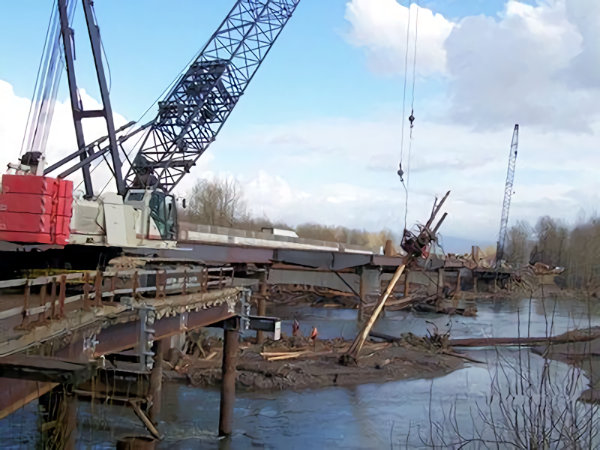Crane Operations Safety Measures
Following safety precautions for cranes should be exercised in conjunction with the general safety precautions for heavy equipment.
- Never hoist objects with unknown weights. It may be difficult to judge the load in some cases (e.g., an object in water). When hoisting a load from water below, the crane takes on the added load imposed by the displaced water as the load is hoisted out of the water.
- When handling a heavy load, raise it a few inches to determine whether there is undue stress on any part of the sling and to ensure the load is balanced. If anything is wrong, lower the load at once and do not attempt to move it until the necessary adjustment or repair has been made.
- Before hoisting a near-capacity load, make sure the hoisting line is vertical. Move the crane instead of lowering the boom, since swinging a capacity load increases the chance of tipping.
- When lowering the boom under load, use extreme caution. Check the load chart with attention to radius changes and observe the radius indicator. These charts are posted in the operator's cab. Never lower the hoisting line and the boom simultaneously. When lowering loads, use a low speed not to exceed the hoisting speed of the equipment for the same load. The ordinary hoisting speed of a 30-ton, motor-operated crane is about 18 feet per minute with a rated load. Stopping the load at such speeds in a short distance may double the stress on the slings and crane.
- Be careful to guard workers, other equipment or objects against being hit from swinging loads. Do not swing loads over workers. If it is necessary to move loads over occupied areas, give adequate warning (by bell or siren) so workers can move into safe locations.
Knowledge Check Choose the best answer for the question.
4-7. What is a safety precaution you should use when working around a crane?
You forgot to answer the question!

